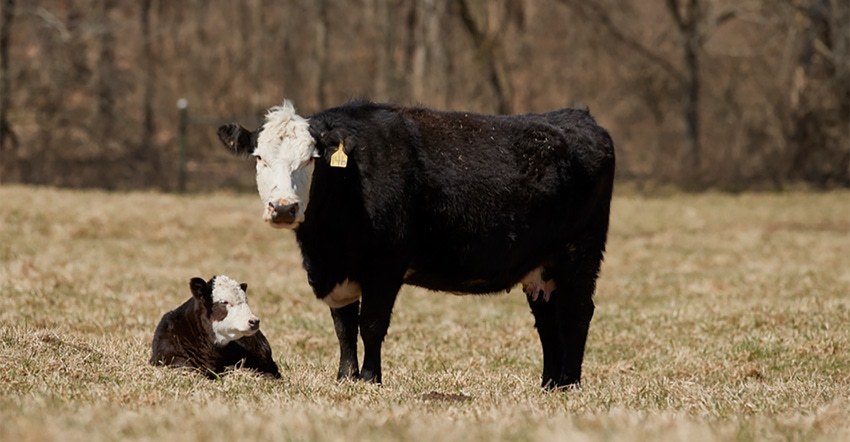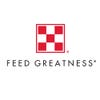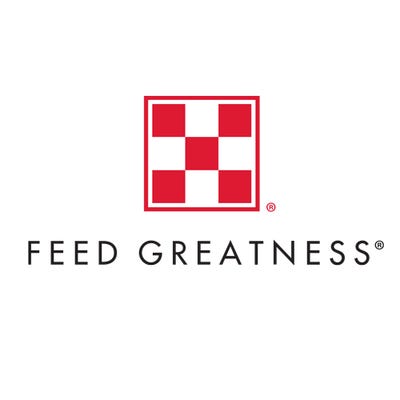Fetal programming’s past, present, and future
Past human research has informed today’s cattle management decisions, and more insights are on the horizon.
November 1, 2019

Sponsored Content
Cattle producers have a lot to thank David J. Barker for.
David J. Barker was a British physician and epidemiologist. He argued that inadequate nutrition in utero could program a human fetus to have long-term disease consequences. In short, his research uncovered that malnourished human fetuses are more likely to suffer from diseases linked to obesity later in life, including cardiovascular issues and diabetes.
Barker’s work was taken and applied to cattle, delivering us the concept we know today as fetal programming.
"Fetal programming knowledge gives us the insight we need to manage our herds differently—ensuring pregnant cows are well nourished," says Patrick Gunn, Ph.D. and beef technical sales consultant with Purina Animal Nutrition
“Nourished cows have nourished fetuses, and nourished fetuses generally result in healthy, growthy calves with long-term potential.”
Fetal programming explained
Fetal programming is the concept that a maternal stimulus or insult at a critical period in fetal development has long-term effects on the offspring. Any stressor can be an insult, including inferior cow nutrition, and can cause DNA methylation to occur in the developing fetus. The DNA itself cannot change, but DNA methylation will cause the activity of the DNA to change, meaning genes will be expressed differently.
“Essentially, methylation is turning on or off specific genes,” says Gunn. “Nourishment of the fetus can impact a lot of a calf’s future biological processes, such as growth, reproductive function and more.”
Managing for fetal programming
“We’re starting to understand that a deficiency or shortage in cow nutrition can really impact the future calf’s potential,” says Gunn. “There’s no acceptable time to make a cow ‘rough it’ and back off nutrition. You’ve got to provide adequate minerals, protein and energy during every trimester to set up the fetus and eventual calf for success.”
Changing forages can cause a gap in nutrition, which can easily go undetected. Quality and quantity change with the weather, and it’s essential to have a plan in place to make sure cows are getting the nourishment they need despite changing forages.
Simple supplementation can help meet cow needs year-round, ensuring cows have the nutrition they need to be well-nourished.
“We’ve got to think about nutrition in terms of meeting fetus needs, too,” says Gunn. “We’re not just meeting cow needs. We’re making sure her eventual calf is getting the nutrition it needs to maximize its genetic potential.”
Cow longevity and fetal programming
“If you’re raising replacement heifers, it’s imperative to understand the role fetal programming plays in cow longevity,” says Gunn. “Pregnant cow nutrition this year can affect herd fertility for the next 8 to 12 years through not only their daughters, but also their grand and great granddaughters. Since fertility is a primary profitability indicator in cow/calf operations, we can’t overlook the long-term implications of today’s nutritional decisions.”
The rule of thumb is that it takes 6 or 7 years for a cow to break-even and become profitable, but the average cow age in the United States is not 6 or 7.
“If we can keep fetal programming in mind when we manage our cows, we’ll develop heifers with more fertility, cow longevity and herd sustainability,” says Gunn.
What's on the horizon?
“Geneticists are trying to establish which genes are most affected through fetal programming and how we might be able to provide therapy to overcome DNA methylation due to nutritional deficiencies,” says Gunn.
The cattle industry’s current fetal programming knowledge is just the tip of the iceberg—it’s a concept the industry will continue to research and explore.
“I’d love to see us get a better handle on which specific nutrients have the most positive impact on phenotypes we’re interested in,” adds Gunn. “And I’d like to learn more about what is optimal for the entire beef production system—not just for cows today or next year, but how to tailor nutrition and management to raise better cows and be more profitable over the next decade and beyond.”
Visit purinamills.com/breeding for more on fetal programming's tie with nutrition.
About the Author(s)
You May Also Like




.png?width=300&auto=webp&quality=80&disable=upscale)
